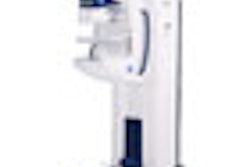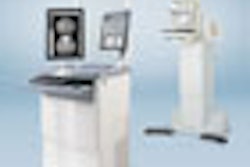
The debate over the relative value of digital breast tomosynthesis (DBT) for cancer screening continues with Dr. Daniel Kopans, founder of the breast imaging division at Massachusetts General Hospital in Boston, who offers an opinion on the technology.
While digital breast tomosynthesis may not be a total panacea for the shortcomings of mammography, it is still one of the most promising technologies in development for improving the sensitivity and specificity of screening mammography.
While some industry observers are quick to seize on mammography's false-positive rate, the fact remains that aggressive detection of breast cancer is the main reason that the death rate from breast cancer has decreased in the U.S. by 25% since 1990. Countries with lower false-positive rates do not find as high a number of early cancers as are found in the U.S.
Improved therapy has made a small contribution (enhanced by early detection), but studies in Sweden and the Netherlands make it clear that it is mammographic screening that is responsible for saving tens of thousands of lives. In Sweden the death rate has decreased by 50% for women who come in promptly for mammography screening.
This is a remarkable achievement given that the death rate from breast cancer had remained unchanged for the preceding 40 years. In addition, in the 1970s and 1980s, there was great skepticism about our ability to screen sufficient numbers of women to have an impact on mortality. American radiologists should be congratulated on rising to the challenge and developing a massive screening effort that has been very successful. However, none of us feels that we have triumphed over breast cancer, and we continue to seek better ways to detect and diagnose early cancer.
The advantage of DBT is that it builds on the success of mammography by eliminating one of the major problems with two dimensional x-ray imaging -- the superimposition of normal tissues (structure noise).
Whole-breast tomosynthesis was first conceived at the Massachusetts General Hospital. I first thought about applying the technique to the breast back in 1978 when I read about the general principles that were described in papers from the 1960s and early 1970s. However, we had to wait for the development of digital detectors for mammography in the 1990s to allow us to test the approach in the breast.
Loren Niklason, Ph.D.; Richard Moore; Dr. Laura Niklason; and Bradley Christian, Ph.D., worked out the physics and geometry, and we proved the concept using phantom materials and mastectomy samples. With a grant from the U.S. Army, the first prototype whole-breast tomosynthesis system was built.
Since then we have demonstrated, in blinded reader studies, that lesions are more conspicuous on tomosynthesis since structure noise (superimposition of normal breast tissue) is essentially eliminated.
It's true that DBT is unlikely to completely solve the problem of detecting all cancers earlier. DBT is better, but it is still x-ray mammography. If a cancer is surrounded by and abuts tissue of the same x-ray attenuation as the cancer, and there is no architectural distortion or calcium deposition, it will be hidden on DBT just as it is hidden on 2D mammography.
In many ways, DBT shares some of the same advantages as full-field digital mammography (FFDM). DBT uses the same digital detectors as FFDM systems, and has the capability of having the same spatial resolution as the digital system.
In my experience, DBT has higher contrast resolution. Microcalcifications are visible on DBT and are often better seen because of the removal of structure noise. The margins and morphology of lesions are more clearly seen with DBT than 2D mammography, and the 3D location of a lesion is never in doubt on DBT, while it is frequently a problem on 2D imaging.
We have found, in a blinded study of more than 2,500 women being screened using DBT and digital mammography, that specificity is clearly improved, not decreased as suggested. Based on our experience in more than 400 other volunteers, DBT is likely to have a higher sensitivity as well.
As with any technological advance, I believe it is best to be cautious in making claims. DBT will not find all cancers, and will not eliminate all deaths from breast cancer. But based on my experience in more than 3,000 studies, it provides major advances over conventional 2D mammography.
An additional advantage of DBT is that if the x-ray tube is not moved, it provides a standard 2D digital mammogram so that shifting to DBT will not require eliminating 2D mammography should the radiologist wish to have a conventional image as well.
Finally, having a high-resolution mammographic system that provides 3D information will help advance our ability to detect and diagnose breast cancer by serving as the platform for introducing other methods, such as metabolic analysis. Contrast subtraction DBT shows some promise.
We are already exploring DBT with ultrasound, optical imaging, and electrical impedance imaging. Just as with PET/CT, accurate registration of multiple modalities that have low spatial resolution, but metabolic information, with the high-resolution "morphological" information of DBT should further improve sensitivity and specificity.
The benefits of DBT will make this an important advance in the detection and diagnosis of breast cancer. We should not lose sight of the fact that this technology is in its infancy and already has obvious advantages.
By Dr. Daniel B. KopansAuntMinnie.com contributing writer
October 30, 2007
Dr. Daniel Kopans is a senior radiologist in the breast imaging division, department of radiology, Avon Comprehensive Breast Evaluation Center at Massachusetts General Hospital in Boston. He is also a professor of radiology at Harvard Medical School, also in Boston.
The opinions expressed in guest editorials are those of the author, and do not necessarily reflect the views of AuntMinnie.com.
Related Reading
DBT unlikely to hit its target as savior of breast cancer screening, June 26, 2007
Copyright © 2007 AuntMinnie.com



















